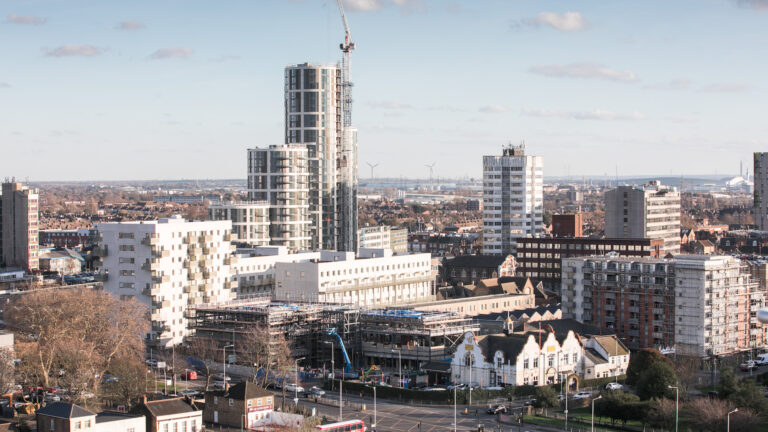Swindon’s Property Market- A Closer Look at Surging Prices
Swindon, a thriving town in Wiltshire, has experienced significant growth in its property market in the UK, over recent years. Understanding the factors driving this surge and the implications for buyers, investors, and residents is crucial as prices continue to rise. Here’s a closer look at Swindon’s property market by your trusted estate agents covering Swindon and the key factors contributing to the increase in property prices.
1. Strong Economic Growth and Employment Opportunities
Thriving Local Economy:
- Diverse Employment Base: Swindon has a strong and diverse economy, with major employers in sectors such as manufacturing, technology, and finance. Companies like Honda (before its closure), Nationwide Building Society, and Intel have established a significant presence in the town, contributing to local employment and economic stability.
- Job Creation: The town’s ability to attract and retain large employers has led to steady job creation, which drives demand for housing. As more people move to the area for work, the demand for rental and owner-occupied properties has increased, pushing up prices.
Commuter Appeal:
- Proximity to London: Swindon’s location on the main railway line between London and Bristol makes it a popular choice for commuters. The town offers more affordable housing compared to London, yet provides easy access to the capital, which has boosted demand from those looking to escape the high costs of London living.
- Transport Infrastructure: Swindon benefits from excellent transport links, including the M4 motorway, which connects the town to major cities like Bristol and Reading, further enhancing its appeal to commuters.
2. Increased Demand and Limited Supply
Population Growth:
- Rising Population: Swindon’s population has been growing steadily, driven by both natural growth and inward migration. This has led to increased demand for housing, particularly as more families and young professionals choose to settle in the area.
- First-Time Buyers: The town’s relatively affordable property prices compared to neighbouring areas have made it an attractive option for first-time buyers, further increasing demand.
Housing Supply Constraints:
- Limited New Developments: While there has been some new housing development in Swindon, the supply has not kept pace with demand. Planning restrictions, the availability of land, and the pace of construction have limited the number of new homes coming onto the market, contributing to the upward pressure on prices.
- Competing Demand: As Swindon’s popularity grows, competition for available properties has intensified, leading to bidding wars and higher sale prices, particularly in sought-after areas.
3. Regeneration and Infrastructure Projects
Ongoing Regeneration:
- Town Centre Improvements: Swindon has seen significant investment in its town centre, with regeneration projects aimed at improving public spaces, retail offerings, and leisure facilities. These improvements have enhanced the town’s attractiveness to both residents and investors, contributing to rising property values.
- Commercial Developments: New commercial developments, including office spaces and business parks, have also added to Swindon’s economic appeal, attracting businesses and workers to the area.
Infrastructure Enhancements:
- Transport Upgrades: Ongoing transport infrastructure improvements, including upgrades to the railway station and road networks, have made Swindon even more accessible, further boosting its appeal as a place to live and work.
- Digital Infrastructure: Investment in digital infrastructure, such as high-speed broadband, has also made Swindon more attractive to businesses and remote workers, adding to the demand for housing in the area.
4. Impact on Property Prices and Market Dynamics
- Surging Property Prices: Steady price growth, Swindon has witnessed steady growth in property prices over the past two years. This has recently picked up pace, with some areas experiencing double-digit percentage increases in price. Swindon has now emerged as one of the South West’s property hotspots.
- Growing Concerns about Affordability: While this price growth has been good news for pre-existing owners and investors in the property sector, it has equally come with increased fears over housing affordability, particularly among first-time homebuyers and low-income earners who might find it even more difficult to access the property market.
Investment Opportunities:
- Buy-to-Let Market: Rising property prices and strong rental demand make Swindon a destination for buy-to-let investors. Rental yields remain competitive, especially in areas close to transport links and employment hubs where demand from tenants is high.
- Appreciation Potential: Long-term investors seeking capital appreciation may be drawn to Swindon due to the ongoing positive economic growth, infrastructure development, and growing population. The town’s continuous desirability will keep the price tag growing in the near future years.
5. Future Outlook and Considerations
Potential for Further Growth:
- Sustained Demand: These drivers of Swindon’s property market—strong economic growth, commuter appeal, and ongoing regeneration—are expected to continue supporting demand for housing. As such, property prices will likely keep rising, albeit at a more subdued pace, as the drag from worsening affordability starts to kick in.
- Increased Supply of Housing: The steps taken to increase the supply of housing significantly, through new developments and planning reforms, could reduce some of the pressures. Any major impact will depend on the size and pace of these developments.
Risks and Challenges:
- Economic Uncertainty: Although Swindon’s economy is very buoyant, wider economic uncertainties still could hold sway over the property market. Investors and buyers must keep it in mind while deciding on investments.
- Affordability Issues: At this rate of price increases, affordability may become a more serious issue going forward, therefore reducing the demand from first-time buyers and lower-income people. This may, in turn, lead to a further segmented market where the pricier properties are out of the reach of the wider audience.
Conclusion:
With strong economic growth, growing demand, and limited housing supply, the property market of Swindon is sure to hit highs. Though it would retain its charm as a commuter town and the regeneration works and infrastructure of the town are in progress, there are a few loopholes in the affordability and uncertainty of the economy, indicating that the market will grow but is bound to face problems.
In the buy-to-let market and for long-term capital appreciation, Swindon is an excellent opportunity. However, careful considerations have to be made on the dynamics of the market, the potential risks, and the areas one intends to invest in within Swindon.
Timing and an understanding of the local market could be crucial for buyers who are looking to secure a property before further appreciation in price. Looking at alternative financing routes and areas that are coming up in Swindon may provide greater scope for better value for money or growth.




